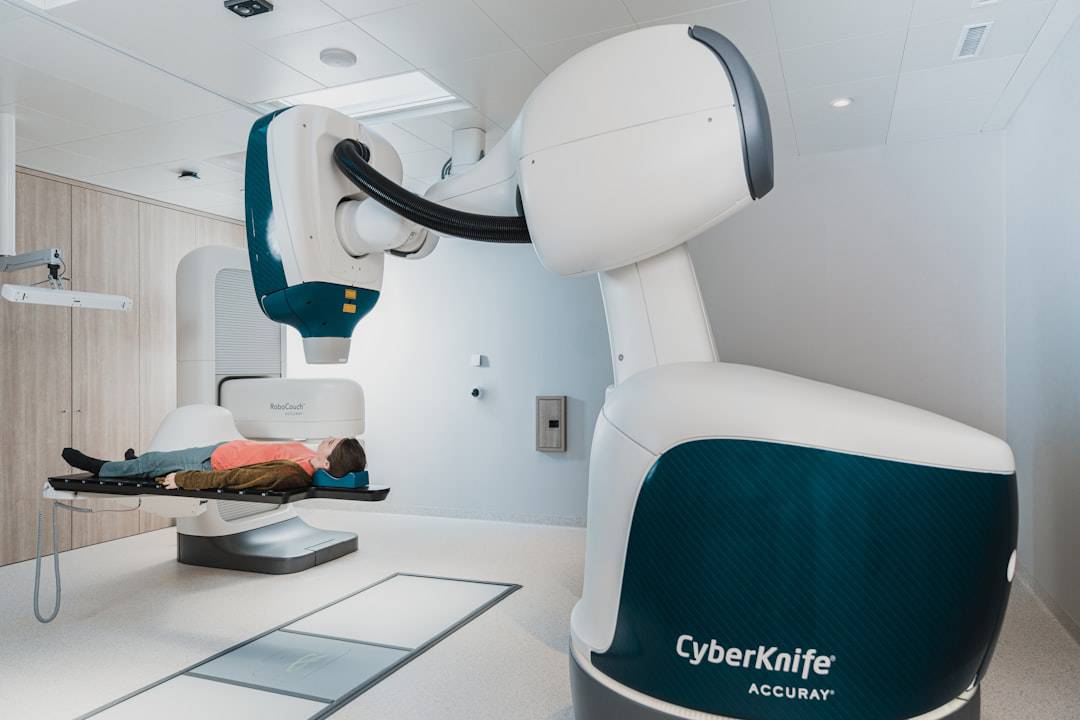Creating models and algorithms that let computers learn, anticipate, & make decisions without explicit programming is the goal of the artificial intelligence field of machine learning. Our relationship with technology could be completely changed by this quickly developing field. Large volumes of data can be processed by machine learning algorithms, which can also identify patterns and make decisions with little assistance from humans. It has thus gained widespread acceptance in a number of industries, including manufacturing, healthcare, finance, and retail.
Key Takeaways
- Machine learning is a subset of artificial intelligence that focuses on the development of algorithms to enable computers to learn and make predictions or decisions without explicit programming.
- Machine learning has the potential to revolutionize industries by enabling more accurate predictions, personalized recommendations, and automation of repetitive tasks.
- Machine learning is being applied in various industries such as healthcare, finance, retail, and manufacturing to improve processes, optimize resource allocation, and enhance customer experiences.
- Data is the fuel that powers machine learning, and organizations need to harness the power of data by collecting, cleaning, and analyzing it to train machine learning models effectively.
- Implementing machine learning comes with challenges such as data privacy concerns, lack of skilled professionals, and ethical considerations, but overcoming these challenges can lead to significant advancements in technology and society.
Machine learning is based on the fundamental idea that systems are capable of learning from data, spotting patterns, and making decisions with little to no help from humans. Algorithms that analyze and interpret data, identify patterns, and produce predictions or decisions based on available information are used to achieve this. With the help of enormous datasets, machine learning algorithms can be trained and eventually become more and more efficient. Machine learning is an effective tool for solving complex issues & promoting data-driven decision-making because of its ability to learn and adapt.
Industries in Transition. In the medical field, machine learning algorithms are capable of diagnosing illnesses, analyzing medical images, & forecasting patient outcomes. Credit risk assessment, trading automation, and fraud detection are some of the uses for it in finance.
Machine learning can be used in the retail industry to analyze consumer data and optimize pricing strategies and marketing campaigns. It can strengthen supply chains, boost quality control, and facilitate predictive maintenance in the manufacturing industry. transforming the relationship between humans and computers. The way we engage with technology could also be completely transformed by machine learning. Chatbots & virtual assistants already use machine learning-powered speech recognition and natural language processing.
| Metrics | Data |
|---|---|
| Number of Machine Learning Models | 50 |
| Accuracy of Predictions | 85% |
| Training Data Size | 10,000 records |
| Testing Data Size | 2,000 records |
Human-computer interactions could become more instinctive & natural as a result of these technologies. Unlimited Uses. Predictive analytics tools, personalized recommendation systems, & driverless cars can all be created with machine learning.
Machine learning has countless possible uses, and society will likely be greatly impacted by it. Numerous sectors, including healthcare, finance, retail, & manufacturing, have benefited from the use of machine learning. Machine learning algorithms are being applied to the healthcare industry to analyze medical images, diagnose illnesses, and forecast patient outcomes. These algorithms can find patterns in medical data that human observers might miss, which helps with diagnosis and treatment planning. Machine learning is being applied in the finance industry to evaluate credit risk, automate trading, & identify fraudulent activity.
The financial sector may benefit from these applications in terms of increased efficiency, lower risk, and improved security. Machine learning is being applied in the retail industry to analyze customer data & customize marketing campaigns. Retailers can improve conversion rates and customer satisfaction by customizing their marketing strategies to each individual customer by analyzing their behavior and preferences. Machine learning is being applied in the manufacturing sector to supply chain optimization, quality control improvement, and predictive maintenance. Manufacturers can reduce downtime and increase productivity by identifying possible problems before they arise by analyzing sensor data from machinery and production processes. The fuel that drives machine learning algorithms is data.
The accuracy and dependability of the predictions and choices made by machine learning models increase with the amount of data available for training and testing these models. Gathering, sanitizing, and organizing massive datasets for analysis are necessary steps in utilizing data for machine learning. Data mining techniques are frequently used in this process to glean insightful information from unprocessed data. Organisations need to invest in data infrastructure and analytics capabilities to fully leverage the power of data for machine learning. To store vast amounts of organized & unstructured data, this entails constructing data lakes or warehouses.
It also entails putting in place data management and governance procedures to guarantee the security and quality of the data. To create and implement machine learning models, organizations need to invest in data science talent as well as in the tools and technologies that allow for large-scale data analysis. Despite the enormous potential of machine learning, putting its solutions into practice presents a unique set of difficulties. Obtaining high-quality data for machine learning model training is one of the primary challenges. Machine learning models cannot produce accurate predictions or decisions unless the data is clean, pertinent, & representative of the problem at hand. This frequently necessitates a large amount of data preparation, cleaning, and collection work.
Having specialized talent is another challenge when implementing machine learning. It is challenging for companies to find and retain the talent required to develop and implement machine learning solutions because there is a high demand but a shortage of data scientists & machine learning engineers. The application of machine learning raises additional ethical questions, especially in delicate fields like finance and healthcare. To win over users and regulators, organizations must make sure that their machine learning solutions are equitable, transparent, & accountable.
Industries Transitioning. Machine learning has the potential to completely transform a number of industries, including healthcare, finance, education, and transportation. Financial forecasting, personalized medicine, and illness diagnosis are just a few of the fields where we can anticipate big technological advances. influence on the community. Machine learning is predicted to have a significant social impact.
Healthcare outcomes, financial security, personalized experiences, and other areas of our lives should all improve as machine learning becomes more ingrained in our daily lives. Challenges & Concerns. But there are also worries about how machine learning might harm jobs and privacy in the wrong ways.
In some industries, there is a chance that jobs will be lost as machines grow more adept at doing jobs that were previously completed by humans. The moral use of personal data in machine learning applications is another issue that has raised concerns. To sum up, machine learning has the power to transform entire sectors, boost productivity, and spur creativity.
It’s an extraordinarily potent tool for resolving complex issues and reaching data-driven decisions because of its capacity to evaluate vast volumes of data, spot patterns, and generate predictions or judgments with little to no human involvement. However, utilizing data for machine learning necessitates a large investment in talent, analytics skills, and data infrastructure. To fully utilize machine learning, organizations must also overcome obstacles pertaining to ethical concerns, a talent shortage, and high-quality data. It is critical that we think about how machine learning will affect society as we move forward and take action to minimize any risks while maximizing its benefits.
Addressing issues like job displacement, privacy, and the moral use of personal data in machine learning applications are all part of this. By doing this, we can make the most of machine learning’s potential to promote improvement and enhance people’s lives everywhere.
If you’re interested in the intersection of technology and virtual reality, you may want to check out this article on Exploring the Metaverse: A New Frontier in Digital Reality. It delves into the concept of the metaverse and how it is shaping the future of digital experiences. This article provides a fascinating look at the potential of virtual spaces and the impact they could have on our daily lives.
FAQs
What is machine learning?
Machine learning is a subset of artificial intelligence that involves the development of algorithms and statistical models that enable computers to improve their performance on a specific task through experience, without being explicitly programmed.
How does machine learning work?
Machine learning algorithms use training data to learn patterns and make predictions or decisions without being explicitly programmed. The algorithms are trained using labeled data, and then they make predictions or decisions based on new, unseen data.
What are the types of machine learning?
There are three main types of machine learning: supervised learning, unsupervised learning, and reinforcement learning. Supervised learning involves training a model on labeled data. Unsupervised learning involves finding patterns in unlabeled data. Reinforcement learning involves training a model to make sequences of decisions.
What are some applications of machine learning?
Machine learning is used in a wide range of applications, including image and speech recognition, medical diagnosis, recommendation systems, financial forecasting, and autonomous vehicles.
What are some popular machine learning algorithms?
Some popular machine learning algorithms include linear regression, logistic regression, decision trees, random forests, support vector machines, k-nearest neighbors, and neural networks.
What are the benefits of machine learning?
Machine learning can automate and optimize complex tasks, improve decision-making processes, and uncover insights from large datasets. It can also lead to the development of innovative products and services.











Leave a Reply